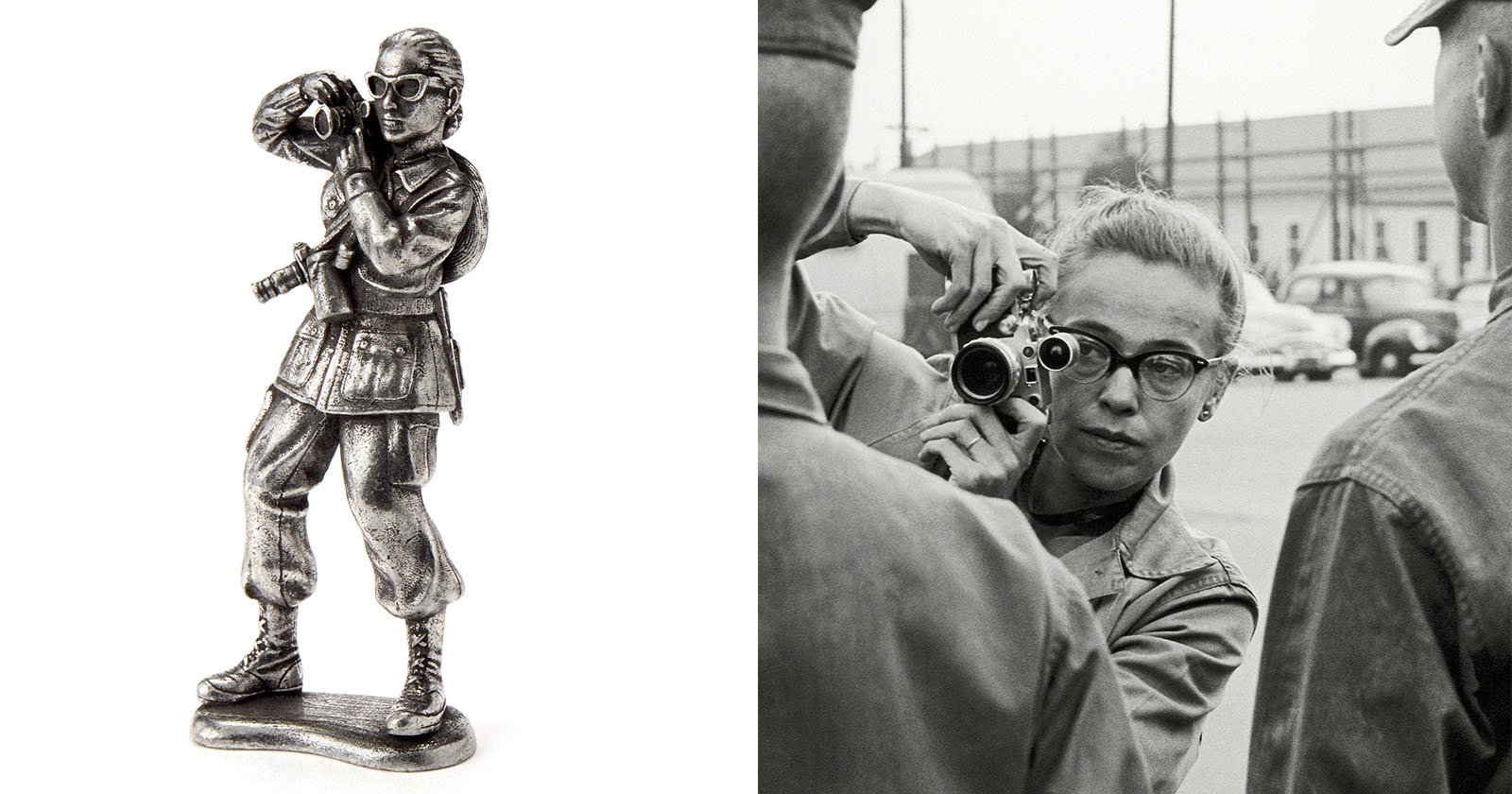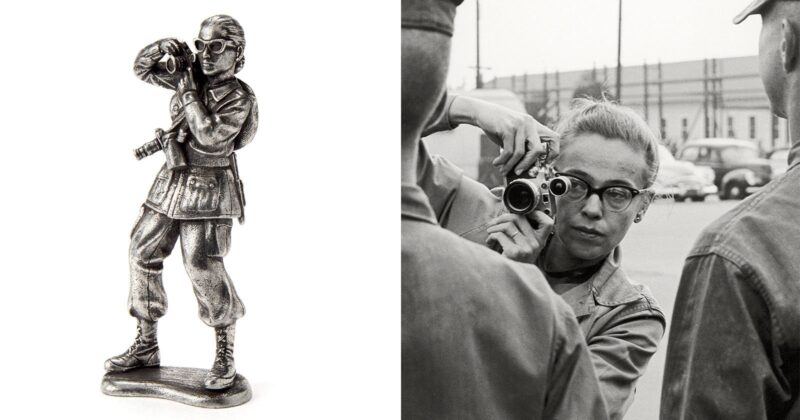
War Toys has worked with the estate of the late, great photojournalist Dickey Chapelle to create a remarkably accurate and detailed 1:32 scale figure of the photographer. This figure, which includes Chapelle’s trademark glasses, earrings, and Leica and Nikon cameras, will join a larger set of noncombatant figures for an educational board game that focuses on the people who work for peace in war and combat.
What Is War Toys?
Acclaimed, award-winning photographer Brian McCarty loves toys and believes strongly in their power to enrich children’s lives and the vital role that play can have in helping children grow into healthy adults. Alongside his lengthy career as a photographer in the toy industry, he is also the executive director of War Toys, a nonprofit founded in 2019 that gathers and shares children’s firsthand accounts of war, as experienced through art-therapy collaborations.
Back in 2022, PetaPixel featured some of McCarty’s work in which he recreated drawings children who experienced war made using toy photography, often photographed by McCarty in active war zones. McCarty’s photography work with toys goes back much further, though, as this PetaPixel feature in 2012 demonstrates.
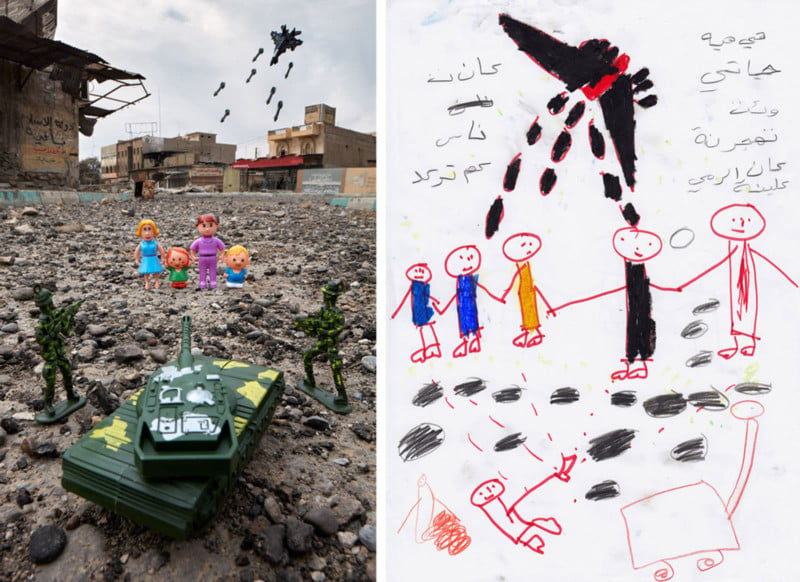 Photo from War Toys series by Brian McCarty
Photo from War Toys series by Brian McCarty
In a recent interview with American Journal of Play, McCarty explains the impact that play had on him as a child.
“My childhood was challenging at times, and long before I understood anything about play therapy, I learned to use play organically as a tool to understand better the world around me,” McCarty says.
The photographer recalls back in 1984, when 11-year-olds David Delgato and Omarr Hernández were gunned down outside a McDonald’s in San Ysidro, California. They were killed along with 19 others in one of the first modern mass shootings in the United States. This happened just days before McCarty’s 10th birthday, and he recalls being unable to stop looking at the photos of the dead kids on the ground next to their bicycles.
“I couldn’t stop looking at the photos, trying to understand not just the massacre but also who took these pictures and why,” McCarty tells American Journal of Play. “Imagining being there with a camera made the event more accessible and therefore less scary.”
Although he likely didn’t realize it at the time, when McCarty took his new birthday present, a Kodak 110 camera, out and pretended to be a photojournalist, he was processing trauma through grief.
“To most outside observers, I was just playing with my toys,” McCarty says. “In reality, I was filtering the world around me into smaller, safer bites and using the camera to reenact and explore everyday life with a degree of separation.”
Empowering Children Through Play
This intricate connection between photography, art, toys, and play has persisted throughout McCarty’s life and career, carrying forward to the work he does with War Toys.
As he grew up and began working as a professional photographer, McCarty returned to the concept of working through life experiences through play and toys, particularly as it relates to war and military-like toys. In collaboration with mental health professionals in war zones and other artists, McCarty’s series, “War Toys,” depicts horrific tragedies through children’s eyes, which gives the stories all that much more power and depicts victim experiences and tragedies unlike anything else.
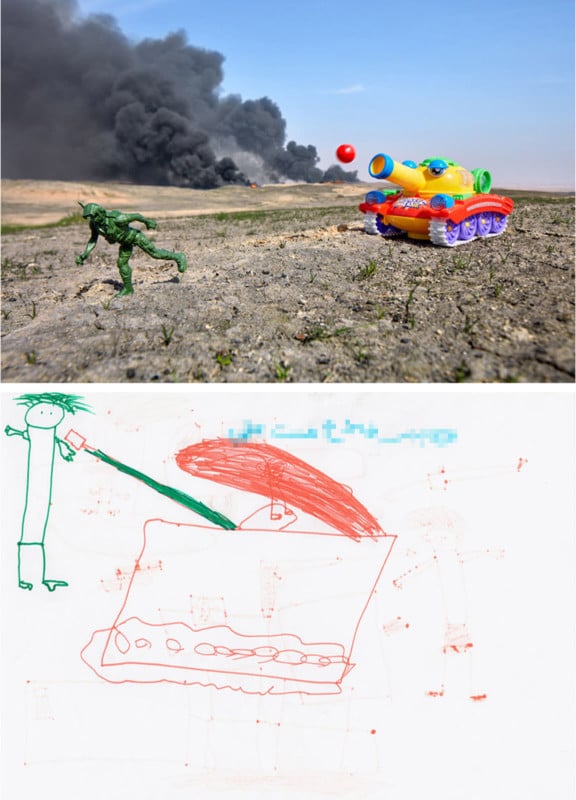 An Iraqi boy draws a tank killing an ISIS fighter. | Photo from War Toys series by Brian McCarty
An Iraqi boy draws a tank killing an ISIS fighter. | Photo from War Toys series by Brian McCarty
Traveling around the world and seeing children process grief and terror through art and play has opened McCarty’s eyes to many things, he says, not the least of which are the disparities in access to toys in different areas, but also how the form that play takes can inform children’s views on war itself.
“War Toys’ entire toy industry program began with a seemingly simple idea: we should add a photojournalist to bags of little green army men,” McCarty says. “That tiny change can create huge ripple effects — giving kids more play options than ‘us versus them’ while subtly promoting more peaceful ideals like freedom of the press.”
Pioneering Photographer Dickey Chapelle
This ties directly into the latest addition to the War Toys’ catalog: Dickey Chapelle.
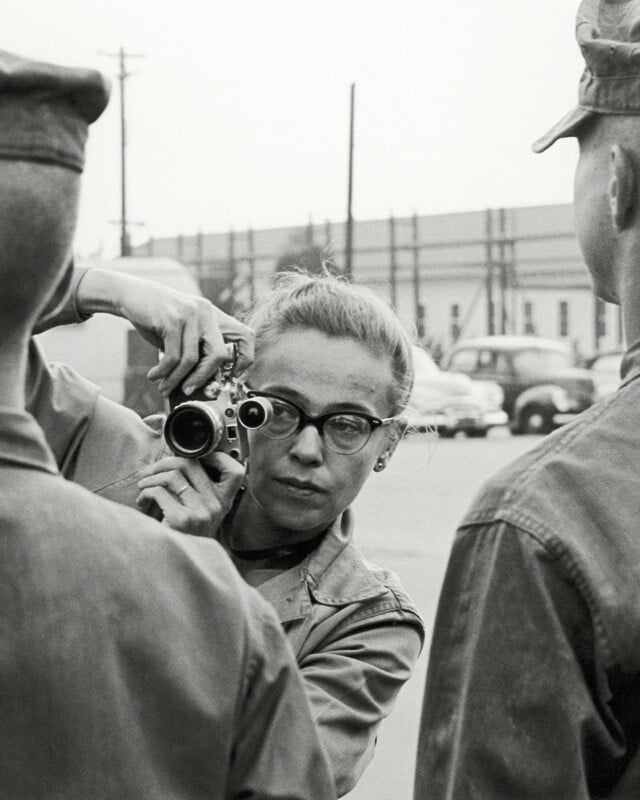 Dickey Chapelle
Dickey Chapelle
Dickey Chapelle (1919-1965) was a combat photojournalist who began her career in World War II, working in Iwo Jima. Over the next two decades, “always wearing her trademark pearl earrings and harlequin glasses,” Chapelle covered conflicts around the world, including the Korean War and the Hungarian Revolution. During the Hungarian Revolution, Chapelle was even arrested by the Red Army for alleged espionage.
Tragically, while on patrol with the U.S. Marines in Vietnam in 1965, she was killed by shrapnel from a booby-trap. Chapelle has the sad distinction of being the first female correspondent killed during the Vietnam War, and the first American woman photojournalist ever killed in action.
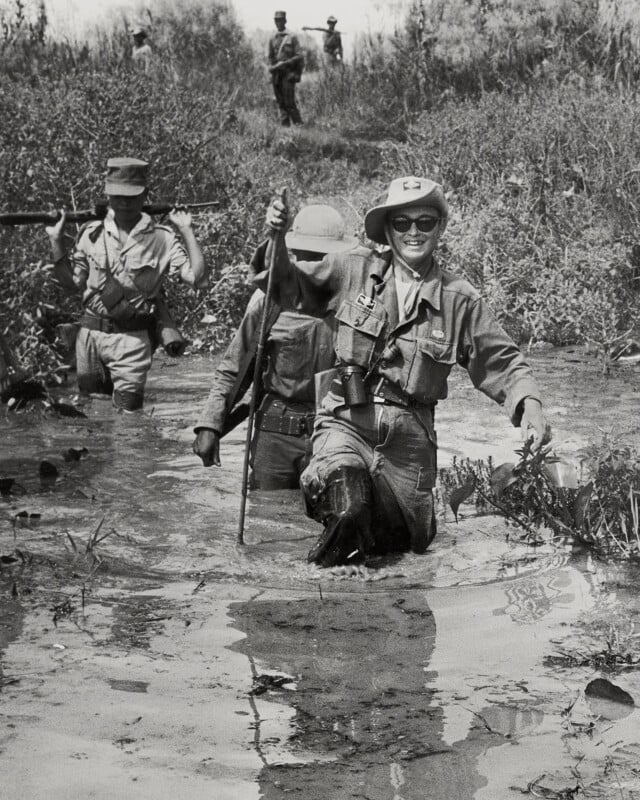
She was an incredible photographer and a remarkable pioneer.
She was buried with full military honors.
“She was one of us, and we will miss her,” the Marines said in a statement in 1965. Dickey Chapelle was made an honorary Marine in 2017.
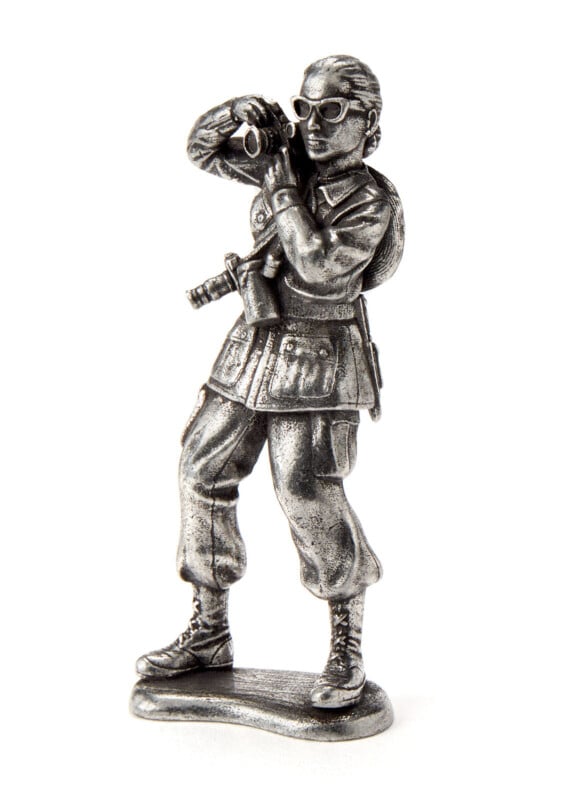
The Dickey Chapelle figure, sculpted in exceptional detail by David Lea with the support of Chapelle’s estate and the Wisconsin Historical Society, features Chapelle’s trademark earrings and glasses. The 1:32 scale figure also includes the K-bar knife a Marine gave Chapelle at Iwo Jima, plus her Leica M3 and Leica IIIc cameras. She also carried a Nikonos-I camera for her “Water War in Vietnam” assignment for National Geographic, which is shown in the figure.
Dickey Chapelle was a trailblazer, and now, through the figure for War Toys, children can play as her — a pioneering woman photographer who was associated with war in a vital noncombatant role.
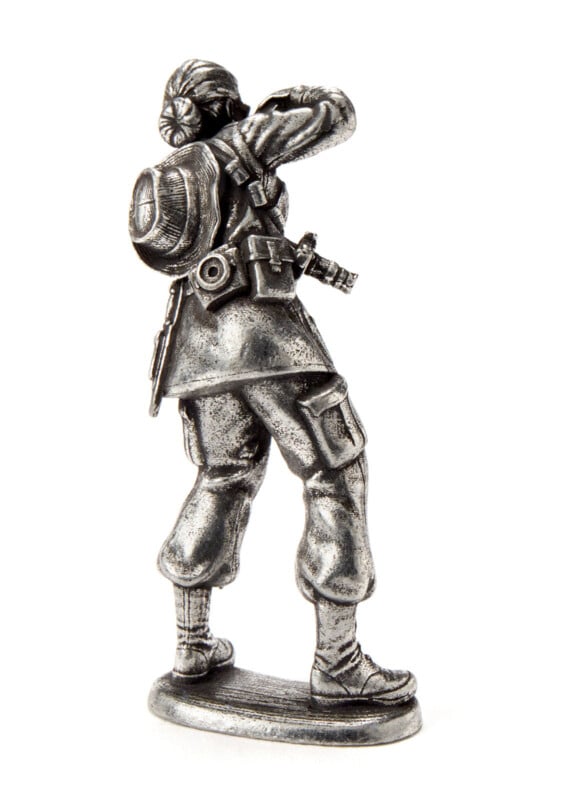
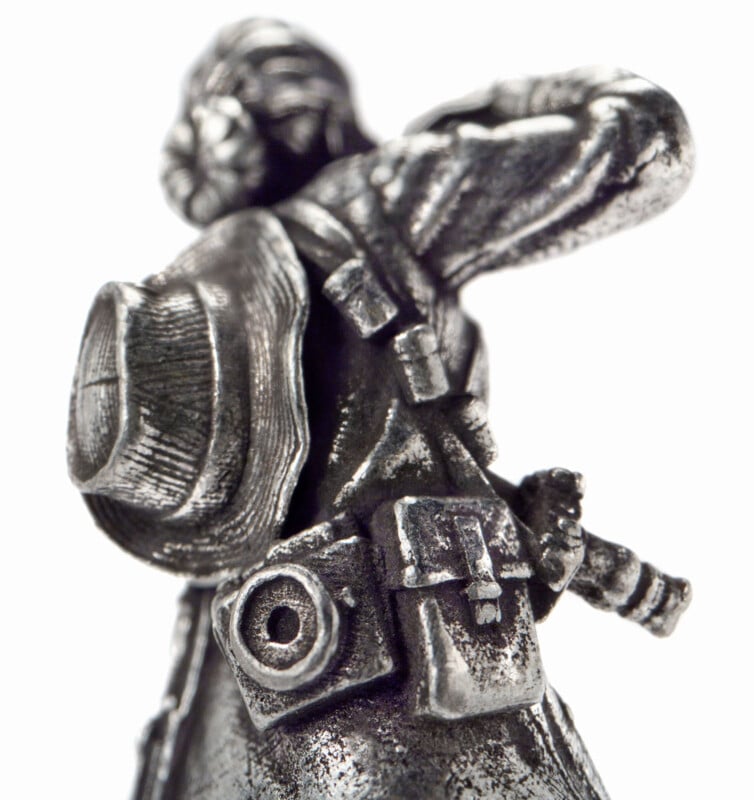
Chapelle’s figure, along with other noncombatant war figures, including photojournalists, frontline workers, and aid workers, will be available worldwide as a set of plastic “Army men” soldiers. War Toys is sharing the designs and molds with global toy-producing partners, ensuring they will be accessible to children worldwide.
“We will impact millions of children through established markets and distribution streams, fostering more positive play betters and a better understanding of war and the people who work for peace,” War Toys says.
 Dickey Chapelle joins 11 other noncombatant figures in Evac Ops.
Dickey Chapelle joins 11 other noncombatant figures in Evac Ops.
War Toys also has an associated board game, Evac Ops, a co-op game for three players. Each assumes one of the three noncombat roles: photojournalist, rescuer, and aid worker, and works together to play war in a way that focuses on those who work for peace, not destruction. War is a sad, harsh reality for so many children around the world, and War Toys works hard to ensure that children can process their trauma through healthy play and art.
“The photojournalist project has grown into a proof of concept for the program, and instead of one figure, there are now twelve. We’ve created a series of noncombatant army men—combat photojournalists, frontline rescuers, and aid workers. They are based on actual women and men known for their work on the frontlines (with their support or support from their estates),” McCarty explains. Through Evac Ops, made in collaboration with socially conscious game designer Nashra Balagamwala, “children to work together as noncombatants to save civilians in a war zone, encouraging continued role play long after the game is won.”
Image credits: War Toys, Brian McCarty
